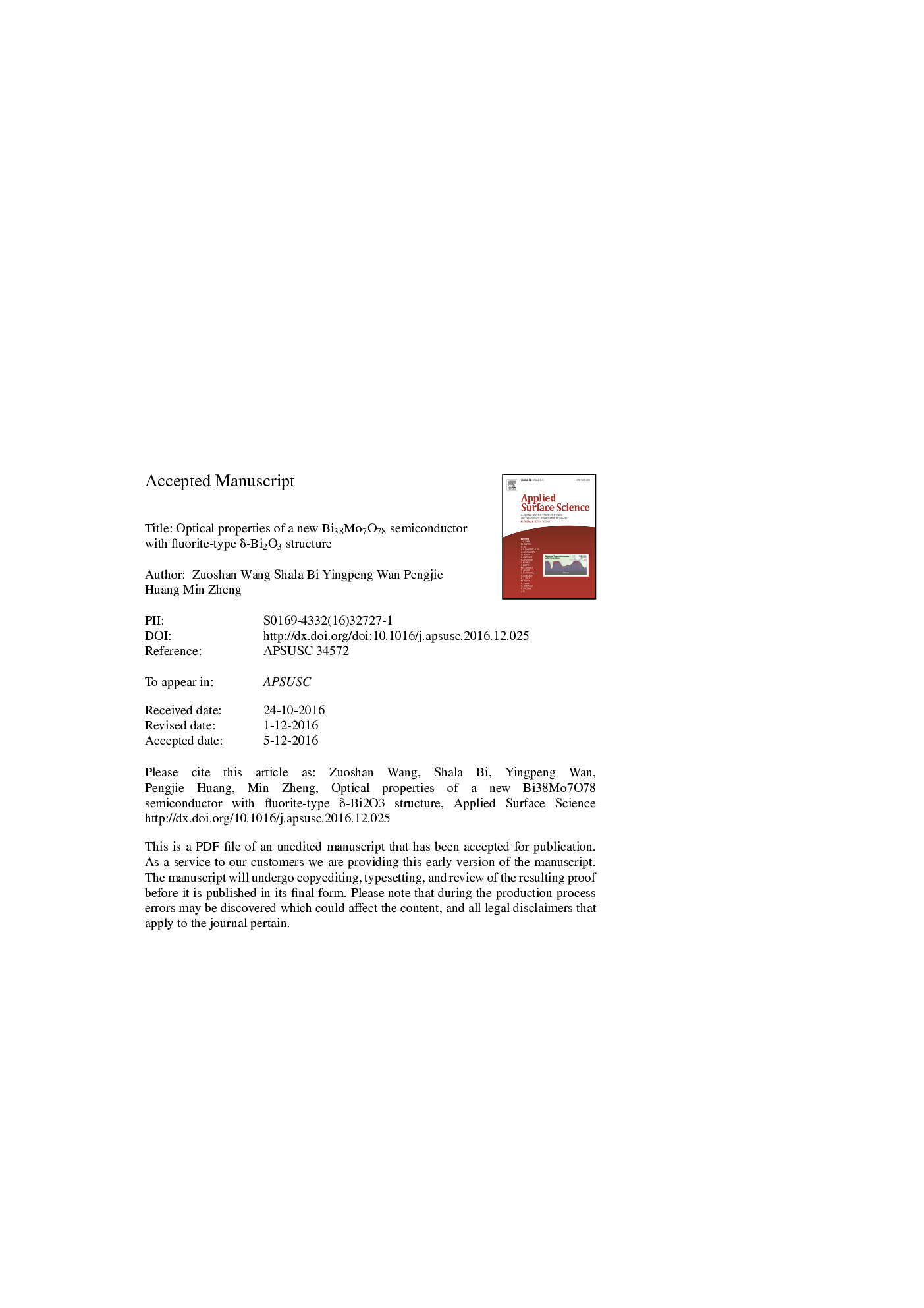| Article ID | Journal | Published Year | Pages | File Type |
|---|---|---|---|---|
| 5351081 | Applied Surface Science | 2017 | 37 Pages |
Abstract
Bi3+-containing inorganic materials usually show rich optical and electronic properties due to the hybridization between 6s and 6p electronic components together with the lone pair in Bi3+ ions. In this work, a new semiconductor of bismuth molybdate Bi38Mo7O78 (19Bi2O3·7MoO3) was synthesized by the sol-gel film coating and the following heat process. The samples developed into nanoparticles with average size of 40 nm. The phase formation was verified via the XRD Rietveld structural refinement. Orthorhombic Bi38Mo7O78 can be regarded to be derived from the cubic δ-phase Bi2O3 structure. The microstructure was investigated by SEM, EDX, TEM, BET and XPS measurements. The UV-vis absorption spectra showed that the band gap of Bi38Mo7O78 (2.38 eV) was greatly narrowed in comparison with Bi2O3 (2.6 eV). This enhances the efficient absorption of visible light. Meanwhile, the conduction band of is wider and shows more dispersion, which greatly benefits the mobility of the light-induced charges taking part in the photocatalytic reactions. Bi38Mo7O78 nanoparticles possess efficient activities on the photodegradation of methylene blue (MB) solutions under the excitation of visible-light. The photocatalysis activities and mechanisms were discussed on the crystal structure characteristics and the measurements such as photoluminescence, exciton lifetime and XPS results.
Related Topics
Physical Sciences and Engineering
Chemistry
Physical and Theoretical Chemistry
Authors
Zuoshan Wang, Shala Bi, Yingpeng Wan, Pengjie Huang, Min Zheng,
